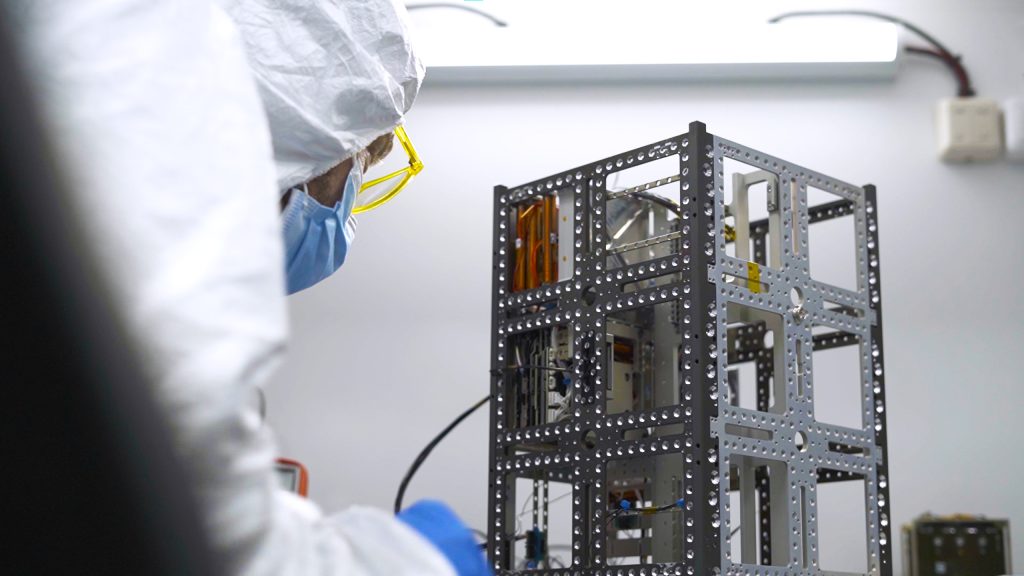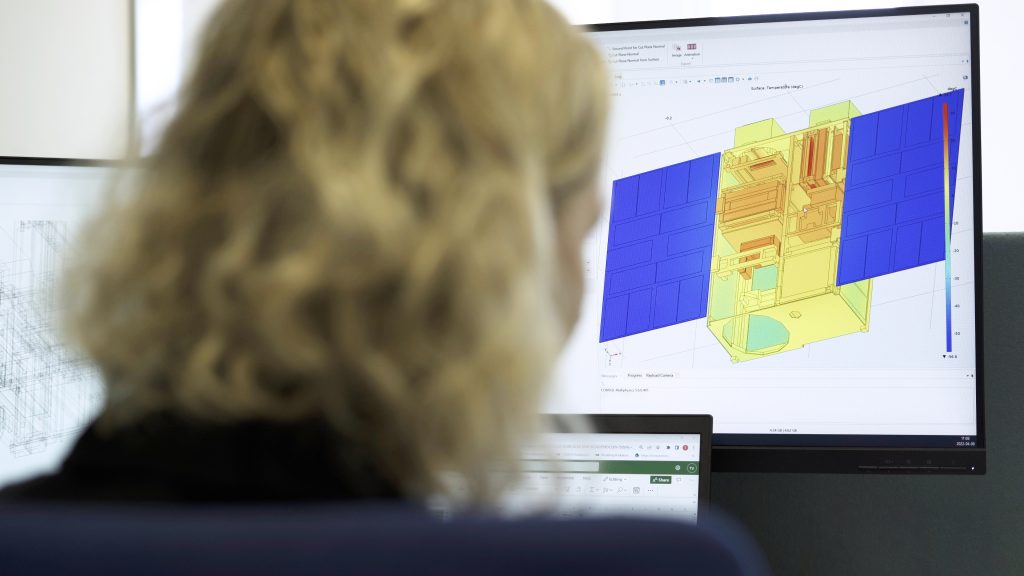Be part of the future with us!
Register now for our online product launch event on May 23rd.
The mechanical engineering discipline is pivotal in the design of CubeSat frames and small satellite deployable structural systems, such as solar arrays or antennas. Mechanical engineers play a crucial role in CubeSat and small satellite development by selecting appropriate materials and mechanical parts. Their expertise in design, analysis, and testing ensures the CubeSat’s capability to withstand vibrations and shock events during launch, as well as temperature fluctuations in the vacuum of space.
Subsystem and Platform Mechanical Design in CubeSats
CubeSats and small satellites are intricate systems where many components affect the overall structural integrity and thermal functionality. Mechanical engineers face unique challenges in CubeSat design, working within strict volume, mass, thermal, and dynamic behavior constraints. This is particularly evident in the internal subsystems and their layouts within the CubeSat frame.
Custom design is often essential in CubeSat projects, accounting for a significant portion of the project’s schedule. This increases time to orbit, costs, and operational expenses. However, for many CubeSat missions, a standard satellite bus can fulfill mission requirements, reducing costs and lead times by leveraging pre-existing design and simulation work.

Thermal Analyses and Design in CubeSat Engineering
Simulating a CubeSat’s thermal behavior in space is critical. Engineers optimize heat transfer to ensure components stay within operational temperature ranges. CubeSat thermal design varies based on payload, orbit, pointing requirements, and operational scenarios. Mechanical engineers incorporate thermal solutions in CubeSats using passive and active means.
Passive thermal management systems in CubeSats include radiators, coatings, and heat sinks. Active systems may use heaters or coolers, especially if the CubeSat payload requires a very low operating temperature.

Structural Analyses and Testing for CubeSats
Every CubeSat must meet specific launch provider requirements for vibrations, shock levels, and fundamental frequencies. Structural Simulation Engineers use Finite Element Method (FEM) for CubeSat designs, ensuring structural integrity under launch and operational loads. Finite Element Analysis (FEA) is crucial in CubeSat development, backed by real-world test data to secure a launch position.
Assembly Manuals for CubeSats
In the CubeSat assembly stage, Mechanical Engineers provide detailed instructions to Assembly Engineers. These include step-by-step guides on joining methods and tools required for efficient assembly and integration of CubeSat subsystems, electrical connections, and structural parts.